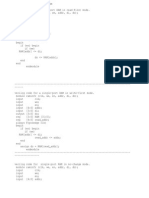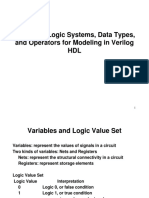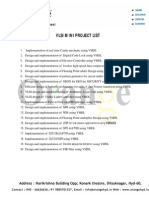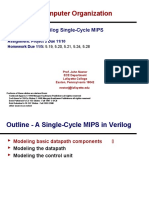0% found this document useful (0 votes)
1K views10 pagesVerilog Code of ROM With Testbenches
The document describes the Verilog code for dual address and single address ROM designs. It contains the code for a dual address ROM module that uses two address inputs to read data from eight 64-bit ROM locations. It also contains the code for a single address ROM module that reads one byte of data at a time from the same ROM locations. Test benches are provided to simulate and test the ROM designs.
Uploaded by
Akanksha JoshiCopyright
© © All Rights Reserved
We take content rights seriously. If you suspect this is your content, claim it here.
Available Formats
Download as PDF, TXT or read online on Scribd
0% found this document useful (0 votes)
1K views10 pagesVerilog Code of ROM With Testbenches
The document describes the Verilog code for dual address and single address ROM designs. It contains the code for a dual address ROM module that uses two address inputs to read data from eight 64-bit ROM locations. It also contains the code for a single address ROM module that reads one byte of data at a time from the same ROM locations. Test benches are provided to simulate and test the ROM designs.
Uploaded by
Akanksha JoshiCopyright
© © All Rights Reserved
We take content rights seriously. If you suspect this is your content, claim it here.
Available Formats
Download as PDF, TXT or read online on Scribd
/ 10



























































